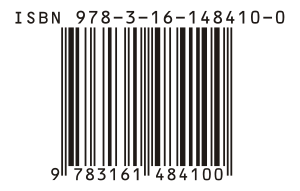ISBN: Difference between revisions
No edit summary |
Wendyulmer (talk | contribs) No edit summary |
||
| (One intermediate revision by the same user not shown) | |||
| Line 1: | Line 1: | ||
{{Short description|Unique numeric book identifier (introduced 1970)}} | {{Short description|Unique numeric book identifier (introduced 1970)}} | ||
{{Extract-photo|[[File:EAN-13-ISBN-13.svg|thumb|right|ISBN barcode]]}} | {{Extract-photo|[[File:EAN-13-ISBN-13.svg|thumb|right|ISBN barcode]]}} | ||
Latest revision as of 19:50, 11 March 2023
The International Standard Book Number (ISBN) is a numeric commercial book identifier that is intended to be unique. Publishers purchase or receive ISBNs from an affiliate of the International ISBN Agency.
A different ISBN is assigned to each separate edition and variation of a publication, but not to a simple reprinting of an existing item. For example, an e-book, a paperback and a hardcover edition of the same book must each have a different ISBN, but an unchanged reprint of the hardcover edition keeps the same ISBN. The ISBN is ten digits long if assigned before 2007, and thirteen digits long if assigned on or after 1 January 2007. The method of assigning an ISBN is nation-specific and varies between countries, often depending on how large the publishing industry is within a country.

